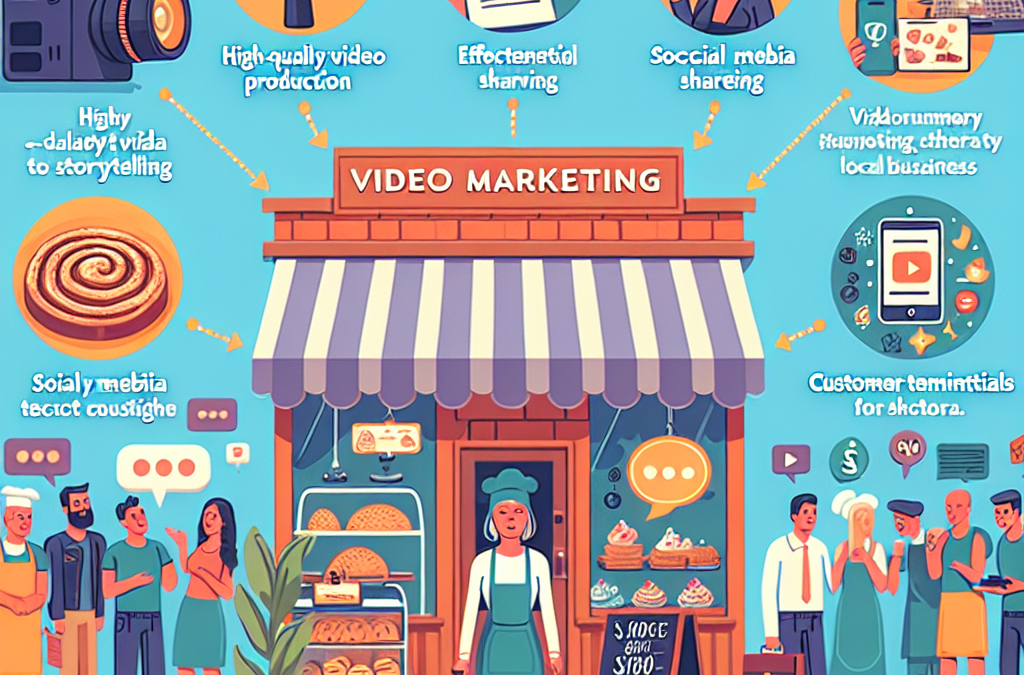Understanding Your Target Audience
Who Are They?
First things first, if you’re gonna win at video marketing, you need to know who you’re speaking to. The local audience can vastly differ, so think about the demographics you’re targeting. Are they millennials? Families? Tennis enthusiasts? Really diving into this can help shape your video content to speak their language.
Consider creating customer personas. These are fantastic tools to encapsulate who your ideal customers are, what they care about, and how to engage with them. Once you have a clear understanding of your audience, it’s much easier to develop a strategy that resonates.
Overall, understanding your audience allows you to tailor your messaging and increase the likelihood that potential customers will see themselves in your videos.
What Do They Want?
Now that you have your audience nailed down, the next step is figuring out what they want. What kind of questions do they have? Pain points? Local events? By addressing these topics in your videos, you capture their attention and show that you understand their world.
Engage with your audience on social media. Initiate conversations, and read through comments; sometimes your audience will outright tell you what they wish to see. This feedback is invaluable, as it allows you to tailor your content specifically to their needs and desires.
In short, when you address your audience’s pain points and interests within your video content, you’re not just marketing; you’re building a community.
Where Do They Hang Out?
Different audiences hang out on different platforms, and that extends to video content. Are you looking to engage with a younger audience? TikTok may be your go-to. Facebook still has a robust user base for local businesses, while YouTube is a great space for more in-depth content.
Spend some time exploring these platforms. Observe what type of content gets the most engagement from your target audience. Dive into analytics to see where your audience spends their time online, and adapt your strategy to meet them where they are.
Finding the right platform makes all the difference. When you post your videos where your audience already is, you up your chances of getting right in front of their eyes.
Creating Compelling Video Content
Tell a Story
Everyone loves a good story. I always strive to include a narrative in my videos. Think about how your product or service solves a problem for your customers. Relate this to a real-life scenario that connects with your audience’s experiences.
Use testimonials or case studies as a part of this storytelling. A satisfied customer sharing their experience adds credibility and makes your brand more relatable. It shows potential customers that others have faced similar challenges and found resolutions with your business.
At the end of your story, don’t forget to include a call to action. This could be as simple as visiting your website or stopping by the store. It guides them clearly on what to do next, which is super important in driving traffic to your business.
Keep it Short and Sweet
In today’s fast-paced world, attention spans are shorter than ever. While I love detailed explanations, I’ve learned that videos under two minutes tend to resonate better with viewers. Cutting the fluff and getting right to the point is essential.
Make each second count. Grab attention within the first few seconds—otherwise, viewers might just scroll past. I often use hooks like interesting questions or tantalizing visuals right at the start to draw them in.
Even with quick videos, don’t skimp on quality. High-definition visuals paired with clear audio can significantly enhance the viewer’s experience, making them more likely to watch and share your content.
Utilize Good Lighting and Quality Audio
We’ve all seen home videos where lighting was an issue. Poorly lit videos don’t do your content any justice. I’ve made it a point to invest in a decent ring light or even use natural lighting from a window when shooting. It’s amazing how much the quality of your video improves just from better lighting.
Audio is equally crucial; it can make or break your video. If your audience is straining to hear what you’re saying, they won’t stick around. I always recommend investing in a good microphone. Trust me, it’s worth it. Clear sound keeps your audience engaged and enhances your overall professionalism.
Date visuals and sound importantly; they can catch and keep an audience and really set your local business apart from the competition.
Distributing Your Videos Effectively
Leverage Social Media
Once you’ve created great video content, the next step is distribution. Social media is a fantastic place for sharing your videos. Each platform has its specific strengths; TikTok is excellent for snappy clips, while longer, more informative pieces might thrive on YouTube.
I also recommend using Stories on various platforms to tease your video content. This not only builds anticipation but also drives traffic to your actual video when it’s launched, amplifying reach from the get-go.
Don’t forget about hashtags and trending topics. Using relevant hashtags can dramatically increase visibility, allowing your video to appear in search results when locals are looking for your products or services.
Email Marketing
If you have an email list, you should definitely utilize it! Sharing your videos through email not only keeps your audience engaged but also drives direct traffic to your content. I always craft engaging newsletters featuring my latest videos, ensuring there’s a clear call-to-action.
Linking back to your website or social media profiles from your email is essential too. This fosters more opportunities for subscribers to engage with your content in various forms.
Also, consider segmenting your list based on previous interactions. If someone showed interest in a specific product, tailor your video content around that. Personal touches go a long way in making your audience feel valued.
Collaborate with Local Influencers
Working with local influencers can provide a significant boost to your video marketing. When influencers share your videos, you gain access to their audience, which may include potential customers you never would have reached otherwise.
To find the right influencers, do a bit of research. Look for individuals who share your brand values and cater to a similar demographic. Creating authentic collaborations not only benefits both parties but can also enhance your brand image within the community.
I’ve partnered with influencers for product launches and even sponsorships at local events. The results have been fantastic, and the content they create often feels more organic, making it more relatable to viewers.
Measuring Success and Making Adjustments
Analyze Viewership Data
After putting so much love and effort into creating video content, it’s essential to check whether it’s paying off. Use analytics tools provided by platforms such as YouTube and Instagram to analyze viewership data and understand viewer behaviors.
Look at metrics like watch time, average view duration, and engagement rates. These insights can tell you a lot about what works and what doesn’t. Personally, I take the time to track these metrics regularly to see if specific patterns emerge over multiple videos.
Adjusting content based on viewer engagement not only improves future videos but also ensures that you’re in tune with what your audience is enjoying most.
Solicit Feedback
Don’t shy away from asking your audience what they think! Gathering feedback from your viewers can provide critical insights. You can do this by simply asking questions at the end of videos or conducting polls on social media.
Encourage comments and discussions; the more feedback you solicit, the better your future content can become. Plus, it makes your audience feel included and valued. When they see their input shaping your content, they’ll be more likely to stick around.
Adapting based on this feedback might mean changing your format, the topics you cover, or even when you post your videos. Listen closely to what your viewers are saying—it’s worth its weight in gold!
Keep Learning and Adapting
The digital landscape is always changing, and it’s important to stay ahead of the curve. What worked last year may not work today. I continuously educate myself on video marketing trends, algorithms, and techniques to ensure my strategies remain effective.
Take online courses, join webinars, and connect with other local business owners. Learning from others can often provide insights you might not have considered. Plus, networking can lead to valuable collaborations!
In a nutshell, staying adaptable allows you to evolve with your audience and industry demands, which is crucial for long-term success.
Frequently Asked Questions
1. Why is video marketing important for local businesses?
Video marketing allows you to engage your audience in a dynamic way and showcase your products or services effectively. It helps build brand personality and connect with your community, making it easier for potential customers to choose your business over competitors.
2. How long should my videos be?
Keeping your videos under two minutes is generally ideal. This brief format ensures you capture viewers’ attention quickly and keep them engaged without overwhelming them with information.
3. What platforms should I use to distribute my videos?
The best platforms depend on your target audience. TikTok and Instagram are great for short, engaging content, while YouTube is excellent for more in-depth storytelling. Consider where your audience spends the most time online.
4. How can I measure the success of my video marketing?
Utilize analytics tools to track viewership metrics like watch time, engagement rates, and audience growth. Analyzing this data helps understand what’s working and what needs adjustment.
5. Should I collaborate with local influencers?
Absolutely! Collaborating with local influencers can extend your reach and introduce your business to new audiences. Just make sure the influencer aligns with your brand values to maintain authenticity.


